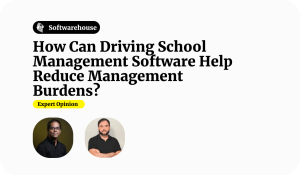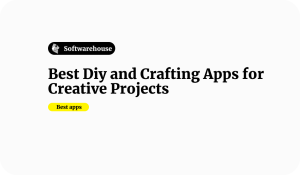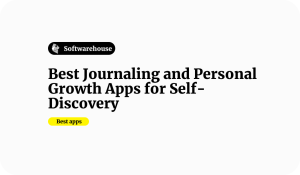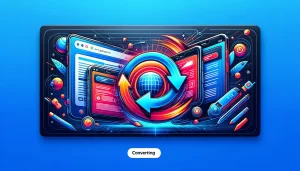What are some best practices for API integration in 2024, and how can developers ensure seamless connectivity? Here is what 6 thought leaders have to say.
- Adhere to Rate Limits and Throttling
- Prioritise Documentation and Testing
- Simplify and Test in Stages
- Focus on Security and Clear Versioning
- Design APIs for Specific Use Cases
- Start Simple with Solid Documentation
Adhere to Rate Limits and Throttling
Adhering to API integration best practices ensures seamless connectivity between your app and the said API. One API integration best practice developers should follow in 2024 is rate-limiting and throttling. APIs perform excellently when the rate limits imposed by the provider are not abused. Developers should adhere to these limits to avoid being blocked from accessing API services.
Developers can also implement throttling in their apps to control the rate at which API calls are made at any given moment. This helps to prevent overwhelming the API server, guaranteeing that the connection remains smooth and provides an excellent experience.
Another option for optimising API calls that developers can opt for is caching responses and batching requests to minimise network overhead.

Clooney Wang, CEO, TrackingMore
Prioritise Documentation and Testing
In 2024, best practices for API integration include prioritising robust documentation and implementing thorough testing protocols. I ensure seamless connectivity by using automated tools to monitor API performance and handle errors effectively.
For instance, integrating APIs with clear, well-documented endpoints and using version control helps avoid disruptions. Regularly testing and validating API interactions ensures reliability and smooth operation, making the integration process more efficient and user-friendly.

David Wilfong, Founder and CEO, DavidWilfong
Simplify and Test in Stages
We are focusing on simplicity and reliability. I’ve seen projects fail because they tried to do too much at once. Keep the scope clear. Understand the APIs’ documentation and start with small, manageable tasks. We had to integrate multiple services for a client, and breaking it down into smaller pieces made the process smoother and more predictable.
Test early and test often, especially with different environments. Bugs that show up in staging can be a nightmare in production. In my experience, catching issues early is better than patching them later. We use continuous monitoring to keep an eye on everything, ensuring our systems stay aligned with the needs of our clients.
Work closely with your team and the API providers. We act as the IT department for our clients, which means staying in sync is crucial. Whether it’s through consistent check-ins or thorough documentation, keeping everyone on the same page prevents a lot of headaches down the road.

Elmo Taddeo, CEO, Parachute
Focus on Security and Clear Versioning
In 2024, security, scalability, and seamless connectivity are the main priorities of best practices for API integration. Here are a few crucial tactics:
- Security: Enable secure authentication and authorisation using OAuth 2.0, and make sure that data is encrypted while it is being transmitted. Update security procedures often to guard against new threats.
- Versioning: To prevent breaking changes during updates, clearly identify API versions. This guarantees the smooth operation of already-existing integrations and enables developers to preserve backward compatibility.
- Detailed Documentation: Provide concise, comprehensive documentation that includes sample requests, responses, and error codes. This aids developers in immediately troubleshooting problems and learning how to utilise the API efficiently.
- Implement Rate Limitations: These will stop misuse and ensure the API continues to function well even with heavy demand.

Fahad Khan, Digital Marketing Manager, Ubuy India
Design APIs for Specific Use Cases
As CEO of an API management platform, I’ve seen APIs evolve a lot over the years. Some best practices:
Design APIs for specific use cases. Build separate APIs to meet unique needs, from data access to automation. Offer sandbox environments so developers can test connectivity.
Rigorous testing and monitoring. APIs should undergo extensive testing pre-release and continuous performance monitoring. Alert systems, version control, and SLAs build trust.
Scalability is key. APIs must handle growth and integrate across platforms. Seamless connectivity today and tomorrow gives maximum value long-term. Keeping standards, security, and scalability top of mind, developers can build innovative APIs.

Brian Pontarelli, CEO, FusionAuth
Start Simple with Solid Documentation
As a consultant focused on API and integration, I’ve seen many companies struggle to connect systems. My advice: start simple. Focus on a few key systems to integrate, build solid documentation and monitoring, then expand from there.
At one of my clients, we started by integrating their ERP and CRM. We built a REST API, documented it thoroughly, and added monitoring to catch issues quickly. Within a month, they had a single view of customers across systems, and sales reps were more productive.
For seamless connectivity, use standard protocols, plan for scaling, and choose an integration platform if needed. Middleware like Dell Boomi provides pre-built connectors so you can get up and running fast. For a transportation client, Boomi halved the time to onboard new carriers by automating data flows between systems.
In the end, successful API integration is about enabling better experiences. Keep the end user in mind, start small, build with standards, monitor closely, and be ready to scale and improve. With the right approach, connectivity can transform how companies operate.

Louis Balla, VP of Sales & Partner, Nuage




























































































